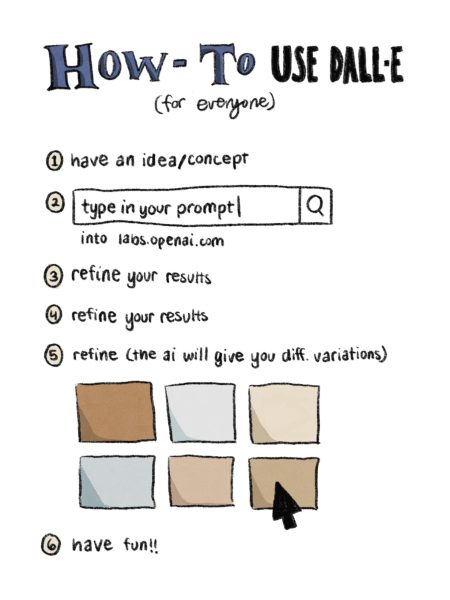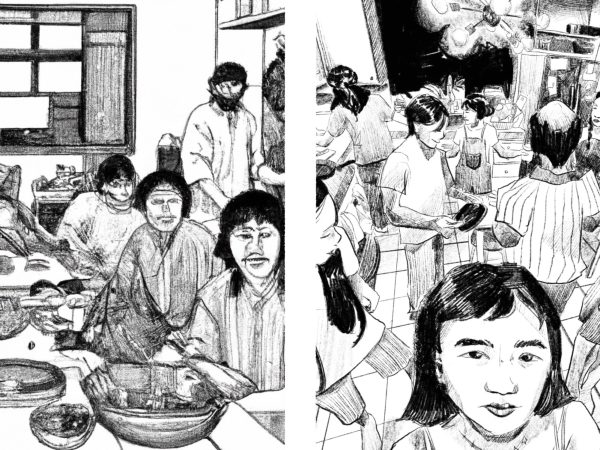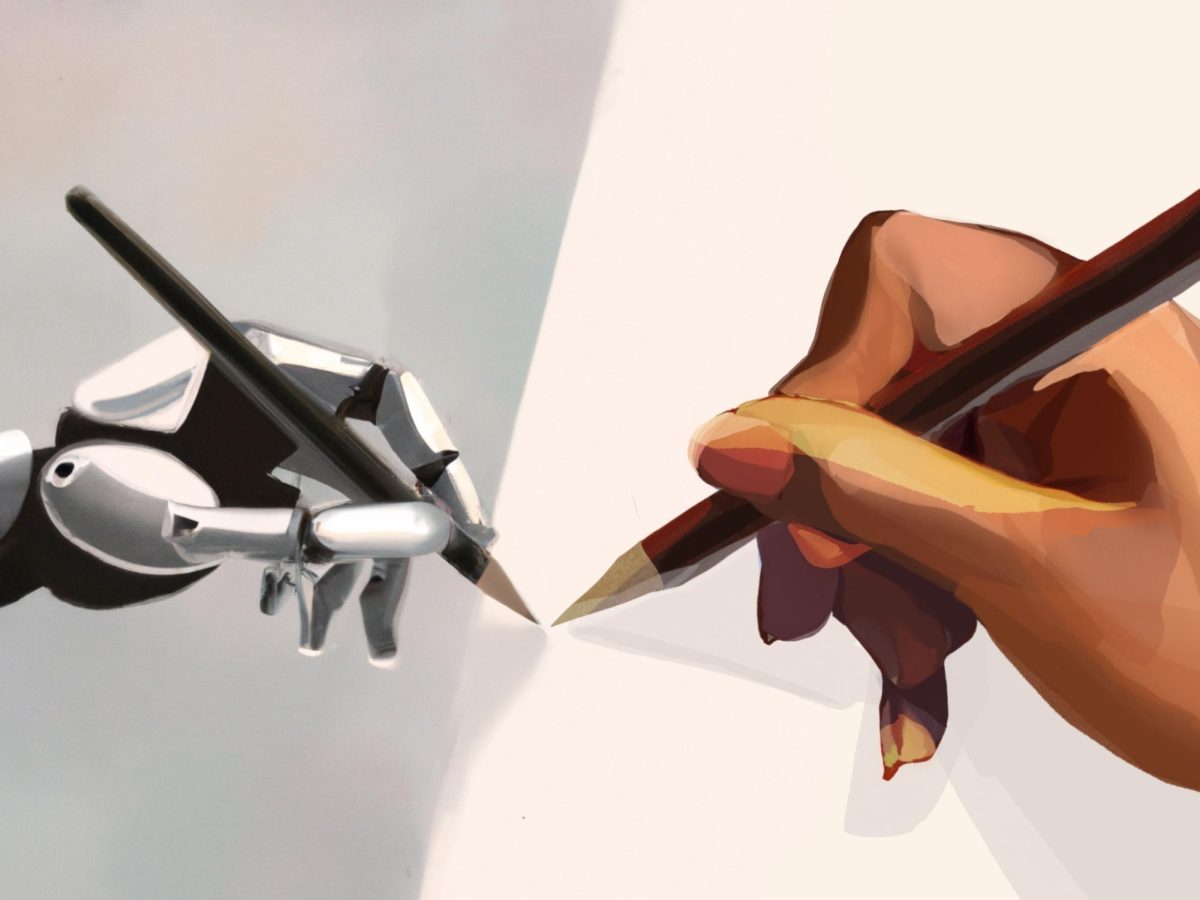The year is 2028. Something catches your eye as you walk down the street: a brilliantly thought-out and executed ad – maybe for a drink, maybe for a stroller. The graphics are incredible. The animation is sublime. You think: wow, whoever created this must be a real genius. Then you realize: there’s a 60% chance that it was all created with AI.
According to Gartner, by 2028 60% of marketing for large brands will be made using AI. According to Time, AI has already surpassed human performance in image recognition, reading comprehension, handwriting, and language understanding, to name a few. In the next few years, it’s projected to surpass humans in code generation and math.
Day by day, AI is growing smarter and smarter, and it has the potential to replicate the exact things that humans might do for a living – the Hollywood writer’s strike being a recent example. It might be a comfort to some that there are at least some things AI can’t touch: like art.
Art is the purest form of human expression and creativity, and everyone has their own art style and ideas. There’s no way a machine could even come close. Right?
Wrong.
Take a look at platforms like Dall-E and Midjourney. Available to everyone, the AI-powered services create stunning visuals from worded prompts. Anyone can type in what they want, for example, a cat flying a plane in the style of Vincent Van Gogh. And then a few seconds later, it would spit out an image as requested. And they don’t stop there: you can keep making variations and refining the image until it’s exactly what you want. Both sites generate upwards of 3 million images a day. People have won awards for the art they have created using the sites. And that begs the question of what’s going to happen next.

Where is the line drawn between creativity and plagiarism? Is AI going to take over creative jobs as well? Do we have to accept that art may become digitalized, or learn how to use this new technology if we want to go into a creative profession?
Steven Broadway, a freelance illustrator and professor at Parsons School of Design, believes that the rise of AI is inevitable.
“You can’t stop it,” Broadway said. “It will come. But in the future, we still will need the skills of illustrators and designers. There are plenty of jobs in the creative industry such as children’s book illustrators and fashion designers and some ideas you just can’t copy with a machine.”
He elaborates on the value of human creativity.
“That’s part of the beauty of it, that it was created with time and hands and love. And that hopefully will hold true,” Broadway said.
Julia Schulman agrees with this sentiment and puts her own spin on it. She’s also a Parsons graduate, now a teacher at Carlmont, and preparing her Art 1, Studio, and AP students for their futures.
“I think AI has the potential, but I also think it could verge very quickly off into plagiarism,” Schulman said.
Schulman isn’t wrong. Software used to create those images often takes references from artists, mishmashing them together with other possibly stolen art. The original artists don’t receive credit for this.
“I don’t think you should feel the need to adapt your career to AI,” Schulman said.
Like Broadway, she agrees that the beauty of art is in its creation and that AI is venturing into new territory, which she likens to the rise of digital art.

“When digital art first became popular, people got scared and started calling it fake. We know now that it’s the artist that makes the art, not the technology. As long as you have your basics down, you’ll have the skills you need to succeed,” Schulman said.
Richard Levine is a filmmaker, creative, and creative director who taught at Sarah Lawrence, NYU, and UCLA. Starting in 1985, he’s directed music videos for the Smiths, Lionel Riche, and Club Nouveau, and he’s watched and adapted himself to the ever-changing industry, people and tools and demand alike.
At the beginning of his career, he was working with film strips; now, he’s creating one-minute videos with AI. Unlike the other two traditional artists, he’s dived headfirst into creating with generative AI.
In order to answer the questions surrounding plagiarism and the validity of art created with a computer, Levine says we need to ask the more tricky, nuanced question: what is art?
One, art should be new. Something that you’ve never seen before. Two, art should make you feel something.
“There’s a synergy between the art and the viewer when looking at true art,” Levine said. “It is a collaboration between the viewer and the art.”
Three, art has a human element. Many would think using generative AI would strip away the labor of love that is often associated with art.
Levine counters this by revealing his process for making one of his videos. Frame by frame, he commands the AI to give him what he wants, revising and finetuning through variations upon variations until he’s satisfied. Often, he has to teach the AI. Then he puts them into the video editing site Adobe Premier and manually edits and tones each still. Then he has to choose and upload music to go with his creation.
His process is deliberate, and one can tell the effort put into each clip. Levine’s art, made with help from AI, checks all the boxes.
“You can think of AI more as a tool,” Levine said. “Just as cameras, editing software, and digital art were tools, the real art is within the creator and the creative process.”
So the answer is: no, you don’t have to force yourself into the tech industry if you want to have a creative job. But you do have to be willing to change and adapt as the world adapts. Drawing by hand is an essential skill to have, but AI is in the future whether we like it or not. Although the effects of this new technology will be unprecedented on this new generation of creatives, it’s important to recognize that it has the potential to help us. Instead of framing it as our competition, we can think of AI as something we can utilize. It is a powerful tool, and it’s up to us to figure out how we want to use it.
As Levine put it, you must be able to “own it.”
“I think it’s important to be multi-faceted,” Broadway said. “And to have the mindset to want to learn more, do more, create more. Instead of looking at AI as an enemy, I think we can see it as a helpful tool and resource we can pull from. AI may be able to do things quicker than we can, but art at its core is made from the heart.”























